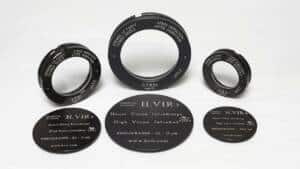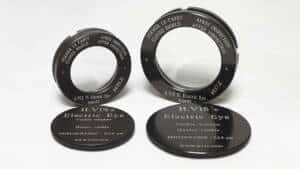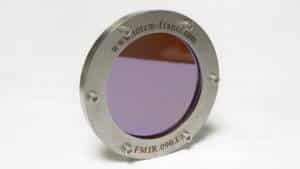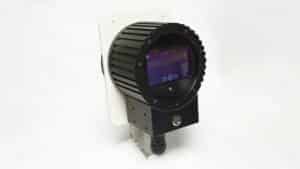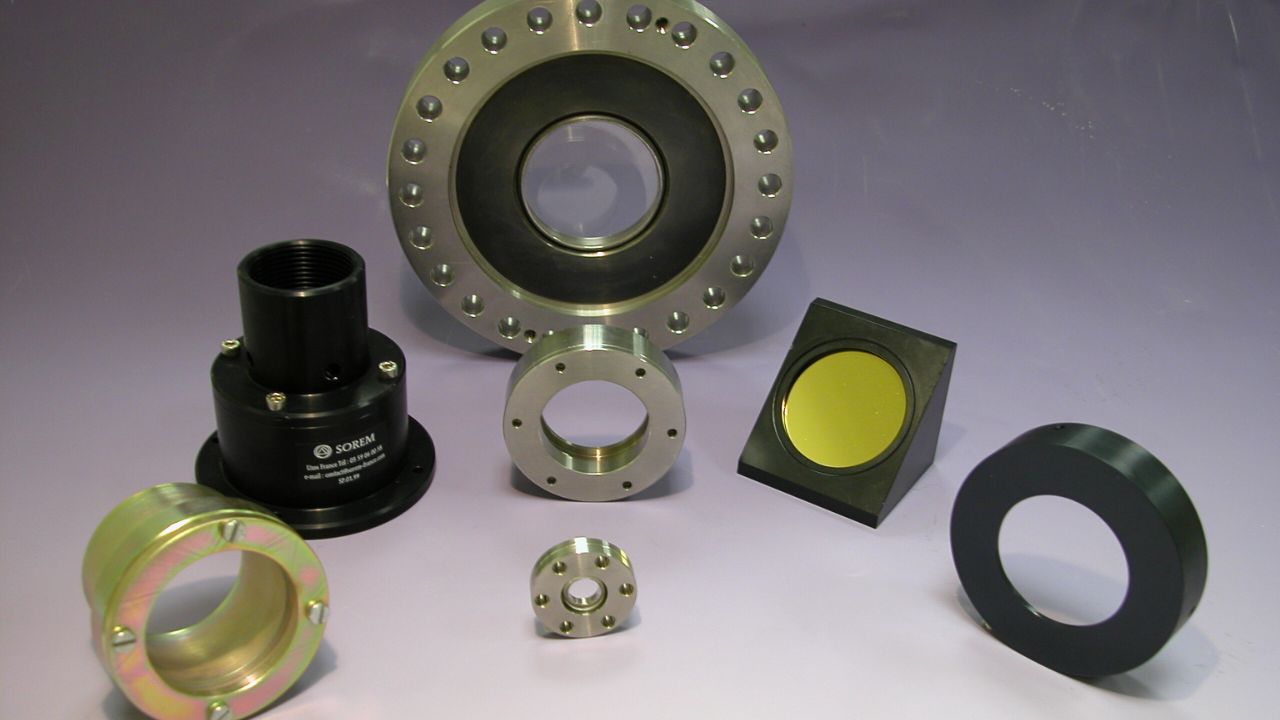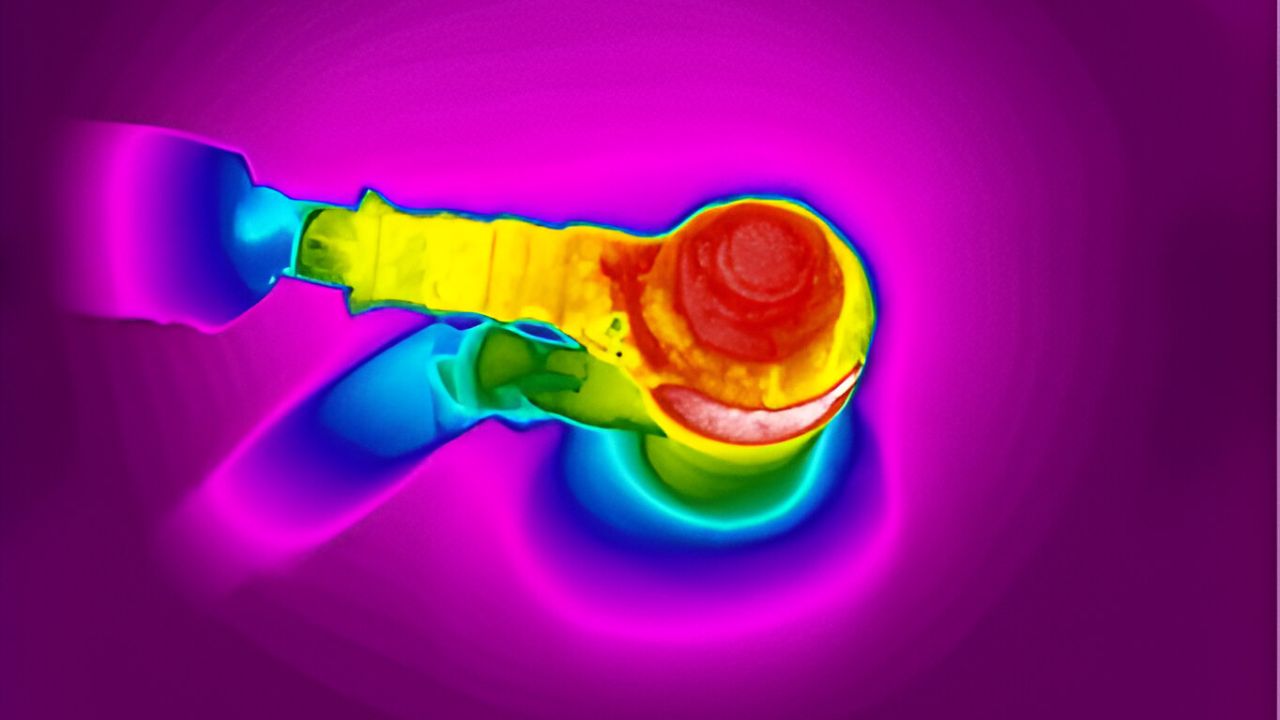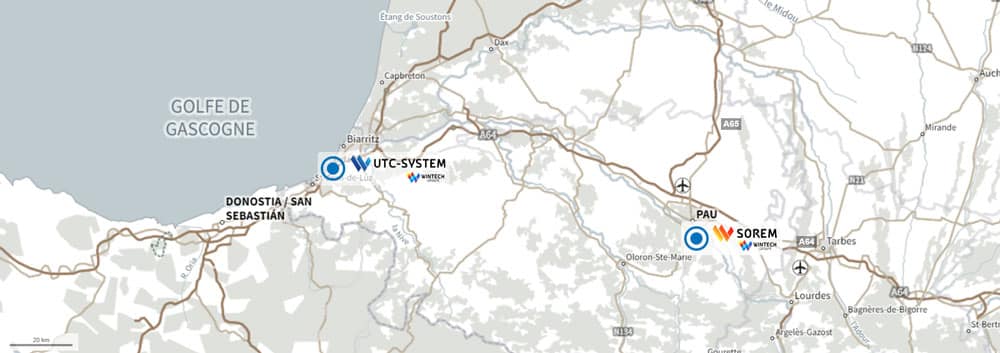Applications and Uses of Optical Windows
Optical windows, also known as optical portholes, are commonly used by industry, research laboratories and engineering schools. These transparent devices can be used to control equipment, monitor or measure operations in various industrial sectors and application areas such as spectroscopy or microscopy. Optical windows can also be designed to be mounted on dedicated equipment for protection or observation uses (defense sector, petrochemicals, etc.). Let’s explore the main areas of application of optical windows in industry and research.
What are the applications of optical windows in industry?
There are many industrial applications for optical windows. They are used in particular by the aerospace, petrochemical and defence sectors to protect equipment or conduct control or measurement operations.
Imaging & Vision System Protection for Industry
Optical windows are used to protect imaging systems such as cameras or optical sensors from external elements (pressure, temperature, erosion, etc.) in specific environments. The transparent portholes allow the necessary light to pass through to ensure high-quality images and are adapted to the required spectral field (ultraviolet, visible, infrared). These applications are used in particular for quality control, automated product inspection, industrial process monitoring, R&D.
For underwater or aerospace applications, optical windows protect optical sensors and cameras in harsh environments (seabed, space). They must withstand water pressure, extreme temperatures, and space radiation while still capturing images and data.
In the defence sector, optical windows are used in night vision devices, infrared cameras, laser ranging systems and missile guidance, among others.
Integration with measuring equipment
Optical windows can be used in industrial applications for the measurement of temperature and pressure in specific mechanical elements. Windows can be used in test chambers, autoclaves, vacuum chambers, combustion chambers, high-pressure vessels and furnaces. They enable the transmission of optical signals while preserving the integrity of the environment being tested or monitored.
Protection of optics of industrial lasers
Optical windows are used to protect the internal optics of industrial lasers (cutting, welding, engraving, etc.). Their design requires high resistance to laser power levels, heat generation, and other constraints specific to laser applications.
Read the case study: Manufacture of custom-made sapphire optical portholes for the MBDA Group
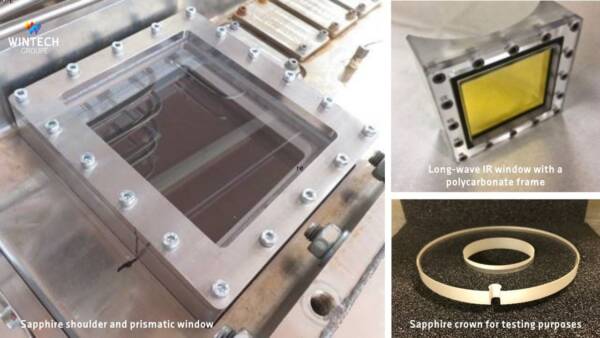
What are the applications of optical windows in research?
Optical windows occupy a central place in research. They are used as an interface to separate the area to be inspected from the measuring devices. It is a window often adapted to be installed on all types of R&D equipment as well as on production lines, on aircraft and in vehicles.
Use of optical windows for scientific research
Research laboratories use optical windows for many experiments, such as studying light, materials or physical processes. Transparency and resistance to specific environments are two essential characteristics required by laboratories.
Using Optical Windows for Measurement Operations
Optical windows allow the precise transmission of light beams to the sample to be analyzed while isolating the instrument from environmental conditions. They are used in the field of spectroscopy, for example, as transparent walls in sampling cells. Optical windows are also used in monochromators and spectrometers. In FTIR spectroscopy, they are used to allow infrared light to pass through the sample.
In the field of microscopy, optical windows allow the transmission of light through the optical systems of microscopes (objectives, condensers, lamps, cameras). They ensure the absence of contaminants to achieve the required image quality and/or optimal illumination of the analyzed sample.
Thus, whether in the industrial field or in the field of research, optical windows play a preponderant role where visualization is crucial. They participate in and contribute to the successful operation of scientific experiments, the protection of key equipment, and the improvement and control of quality and reliability of processes. Depending on the application, optical windows are made of different materials that can meet the requirements of required wavelengths of light and environmental conditions.
Optical windows, also known as optical portholes, are commonly used by industry, research laboratories and engineering schools. These transparent devices can be used to control equipment, monitor or measure operations in various industrial sectors and application areas such as spectroscopy or microscopy. Optical windows can also be designed to be mounted on dedicated equipment for protection or observation uses (defense sector, petrochemicals, etc.). Let’s explore the main areas of application of optical windows in industry and research.
What are the applications of optical windows in industry?
There are many industrial applications for optical windows. They are used in particular by the aerospace, petrochemical and defence sectors to protect equipment or conduct control or measurement operations.
Imaging & Vision System Protection for Industry
Optical windows are used to protect imaging systems such as cameras or optical sensors from external elements (pressure, temperature, erosion, etc.) in specific environments. The transparent portholes allow the necessary light to pass through to ensure high-quality images and are adapted to the required spectral field (ultraviolet, visible, infrared). These applications are used in particular for quality control, automated product inspection, industrial process monitoring, R&D.
For underwater or aerospace applications, optical windows protect optical sensors and cameras in harsh environments (seabed, space). They must withstand water pressure, extreme temperatures, and space radiation while still capturing images and data.
In the defence sector, optical windows are used in night vision devices, infrared cameras, laser ranging systems and missile guidance, among others.
Integration with measuring equipment
Optical windows can be used in industrial applications for the measurement of temperature and pressure in specific mechanical elements. Windows can be used in test chambers, autoclaves, vacuum chambers, combustion chambers, high-pressure vessels and furnaces. They enable the transmission of optical signals while preserving the integrity of the environment being tested or monitored.
Protection of optics of industrial lasers
Optical windows are used to protect the internal optics of industrial lasers (cutting, welding, engraving, etc.). Their design requires high resistance to laser power levels, heat generation, and other constraints specific to laser applications.
Read the case study: Manufacture of custom-made sapphire optical portholes for the MBDA Group

What are the applications of optical windows in research?
Optical windows occupy a central place in research. They are used as an interface to separate the area to be inspected from the measuring devices. It is a window often adapted to be installed on all types of R&D equipment as well as on production lines, on aircraft and in vehicles.
Use of optical windows for scientific research
Research laboratories use optical windows for many experiments, such as studying light, materials or physical processes. Transparency and resistance to specific environments are two essential characteristics required by laboratories.
Using Optical Windows for Measurement Operations
Optical windows allow the precise transmission of light beams to the sample to be analyzed while isolating the instrument from environmental conditions. They are used in the field of spectroscopy, for example, as transparent walls in sampling cells. Optical windows are also used in monochromators and spectrometers. In FTIR spectroscopy, they are used to allow infrared light to pass through the sample.
In the field of microscopy, optical windows allow the transmission of light through the optical systems of microscopes (objectives, condensers, lamps, cameras). They ensure the absence of contaminants to achieve the required image quality and/or optimal illumination of the analyzed sample.
Thus, whether in the industrial field or in the field of research, optical windows play a preponderant role where visualization is crucial. They participate in and contribute to the successful operation of scientific experiments, the protection of key equipment, and the improvement and control of quality and reliability of processes. Depending on the application, optical windows are made of different materials that can meet the requirements of required wavelengths of light and environmental conditions.

